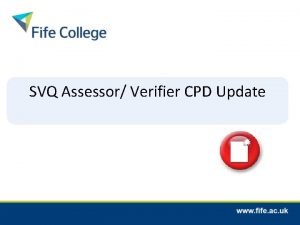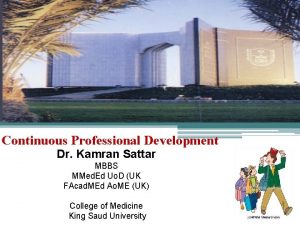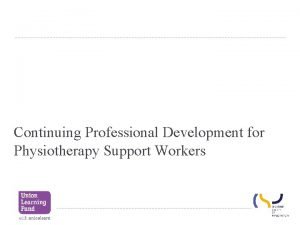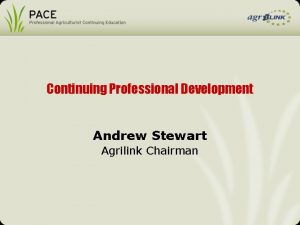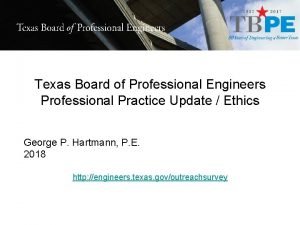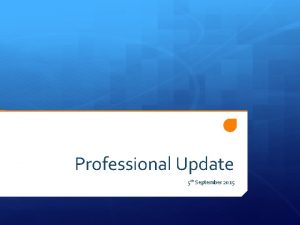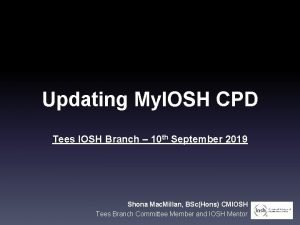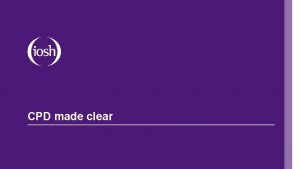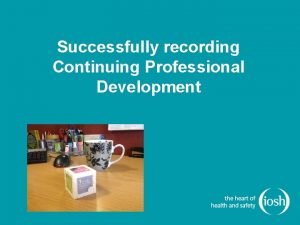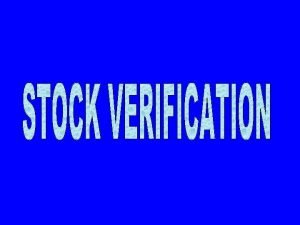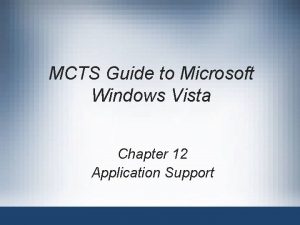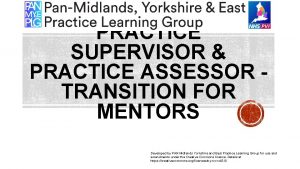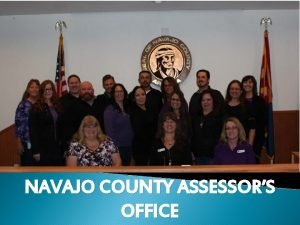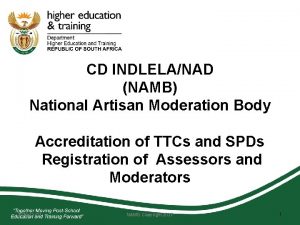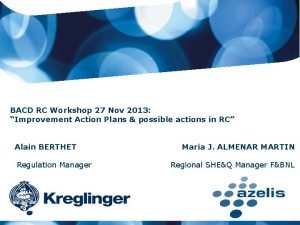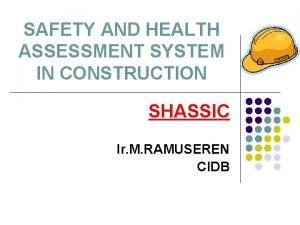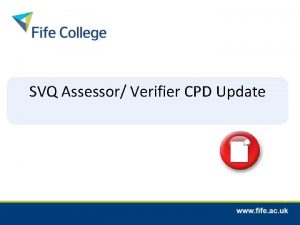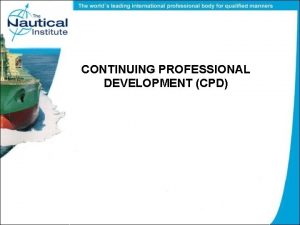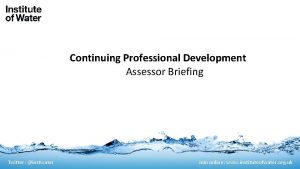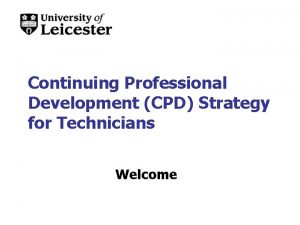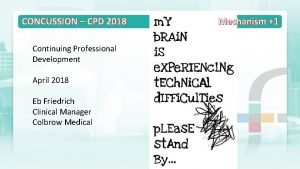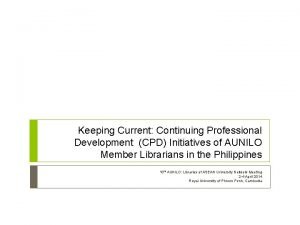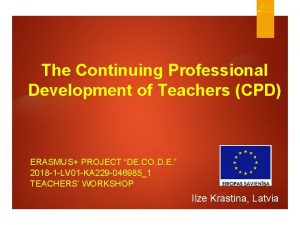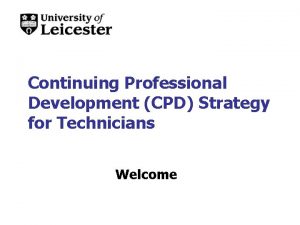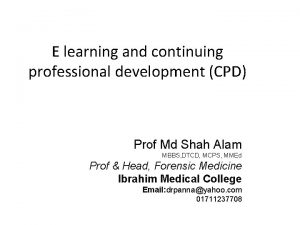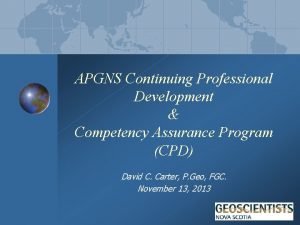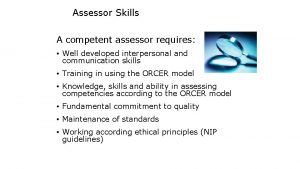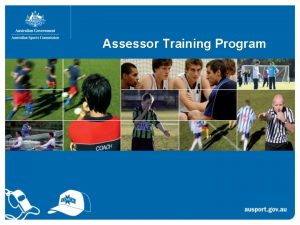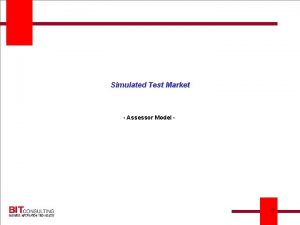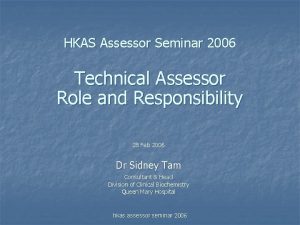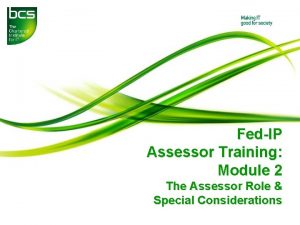SVQ Assessor Verifier CPD Update Continuing Professional Development




























- Slides: 28

SVQ Assessor/ Verifier CPD Update

Continuing Professional Development (CPD) We have a responsibility to - • keep up to date with changes/developments • continuously update our knowledge/ skills • complete a CPD record

Current Qualifications SQA Frequently Asked Questions: If you have the D and/or A and V Units, will these Qualifications still allow me to continue to assess/verify S/NVQs?

SQA - Response Yes, as you are already qualified. You do need to show that you continue to practise to the revised standards contained in the SCQF or QCF assessor and verifier qualifications. SQA 2011

Practising to the standards Assessors/ Internal Verifiers are using the Units as their ‘code of practise’ Required to prove they are practising to the standards …by familiarising themselves with the standards and adjusting practice accordingly (if necessary). SQA

New Units D 32 A 2 L&D 9 D

D 33 A 1 L&D 9 DI

D 34 V 1 L&D 11

L&D 9 D – Assess Workplace Competence using Direct Methods L&D 9 DI – Assess Workplace Competence using Direct and Indirect Methods L&D 11 – Internally monitor and maintain the Quality of Workplace Assessment

L&D 9 DI • Prepare to assess • Plan assessments • Assess candidate performance and knowledge • Confirm progression and achievement

Prepare to assess • Ensure candidates understand the purpose, requirements and process of assessment

Plan assessments • Identify evidence that is valid, authentic and sufficient • Plan to use valid , fair and reliable and safe assessment methods • Plan assessment to meet requirements and candidate needs

Planning Choose the activity and discuss with candidate Identify the best methods to use Identify the standards that should be covered Plan holistically Special assessment requirements

Plans? Who is being assessed by whom The date and location of assessment The activity being assessed The evidence to be judged The methods to be used The units being assessed

Assess candidate performance and knowledge • Collect evidence that is valid, authentic and sufficient • Use valid, fair and safe assessment methods • Make assessment decisions against specified criteria • Work with other to ensure the standardisation of assessment practice and outcomes

Confirm progression and achievement • Provide feedback to the learner that affirms achievement and identifies any additional requirements • Maintain required records of the assessment process, its outcomes and candidate progress

Contribute to Internal Quality Assurance • Assessment records are accurate • Records are on the appropriate paperwork • There is evidence of standardisation

Assessment methods • • Observation of performance Examining candidate’s products of work Questioning Discussing with candidates Testimony of others Examining candidate statements Assessing candidates in simulated environments Recognising Prior Learning

Valid: Is the assessment method appropriate to the activity/evidence I’m assessing? Authentic: Has the evidence been produced by the candidate? Reliable: Would another assessor looking at this evidence agree with my decision and would make the same decision with other candidates?

Current: Will I know that the candidate is currently competent? Sufficient: Will I see enough evidence

Internal Verification

L&D 11 Elements • Prepare to carry out internal Quality Assurance • Plan internal Quality Assurance • Carry out planned monitoring of the quality of assessment • Meet appropriate External Quality Assurance requirements

Prepare to carry out internal Quality Assurance Prepare to monitor the quality of assessment Gathering information on: - the standards being assessed - Assessment and Quality Assurance requirements - Numbers of candidates and assessors - Assessment context - Quality assurance risks

Plan internal Quality Assurance Plan monitoring activities to ensure the quality of assessment is maintained Consider: - Assessor experience - Candidate cohorts - Assessment cycle, methods, principles - Assessment Strategy - External Quality Assurance requirements

Key changes • No longer an element for supporting assessors but this underpins the whole process • Need to be aware of principles and techniques of sampling • ‘Quality Assurance risk management’ • Evidence of standardisation

Sampling Strategy Candidate Cohorts (FT/ PT) Assessors – experience/ inexperienced/ Methods of Assessment – all those used by Assessors Elements – all elements/ units of the unit Revised and new Qualifications/ Units (or problematic) All assessment locations

Sampling Strategy “Interim verification enables the internal verifier to pick up problems at an early stage and so avoid the situation of turning down final decisions. ”

Relevant information • SQA website (www. sqa. org. uk) • Ilearn – Assessor/ Verifier Support • Awarding Body Guidance notes
 The implementation of r.a. 10912 started on:
The implementation of r.a. 10912 started on: L&d9di
L&d9di Continuing professional development
Continuing professional development Continuing professional development
Continuing professional development Continuing professional development
Continuing professional development Svq social services
Svq social services Svq level 5 management
Svq level 5 management Shadow paging recovery technique
Shadow paging recovery technique Board of professional engineers texas
Board of professional engineers texas Ethics and professional responsibility cpd
Ethics and professional responsibility cpd Gtcs prd examples
Gtcs prd examples Gtcs spr
Gtcs spr Iosh cpd guidance
Iosh cpd guidance Iclear cpd
Iclear cpd Iosh cpd development plan
Iosh cpd development plan Duties of stock verifier
Duties of stock verifier National verifie
National verifie Checklifelineorg
Checklifelineorg Application verifier wow
Application verifier wow Process_has_locked_pages
Process_has_locked_pages Telpas calibration practice
Telpas calibration practice Pwrtest download
Pwrtest download Aru mentorship
Aru mentorship Navajo county assessor
Navajo county assessor Namb assessor registration form
Namb assessor registration form Namb accreditation application form
Namb accreditation application form Auditor sqas assessor
Auditor sqas assessor Shassic assessor
Shassic assessor Practice assessor and practice supervisor
Practice assessor and practice supervisor

